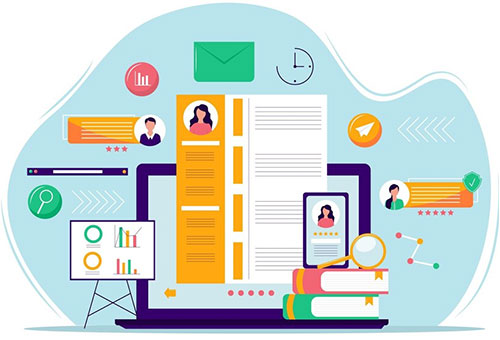
Employee Management Software
- Simplifies HR tasks and workforce administration and supports effective workforce management.
- Streamlines recruitment, onboarding, payroll, and performance management.
- Supports effective workforce management and centralises employee data and automate processes
Streamline Your HR Operations with Employee Management Software
Employee Management Software, also known as Human Resource Management Software (HRMS) or Human Capital Management (HCM) software, is a digital solution designed to help organizations efficiently manage their workforce. It provides a centralized platform for HR professionals and managers to streamline various aspects of employee administration, from recruitment and onboarding to performance evaluation and payroll processing.
Key features of Employee Management Software

Recruitment and Applicant Tracking: This feature helps HR teams in posting job openings, collecting applications, and managing the hiring process. It may include resume parsing, interview scheduling, and candidate communication.
Onboarding and Offboarding: Employee management software often includes tools to automate the onboarding process, such as creating employee profiles, providing training materials, and managing paperwork. It may also assist in offboarding, ensuring a smooth exit process.
Employee Information Management: Centralised storage of employee data, including personal information, contact details, employment history, and more, for easy access and updating.
Time and Attendance Tracking: These systems often include time tracking and attendance management tools, allowing employees to clock in and out, and managers to monitor attendance and track working hours.
Payroll and Compensation Management: Calculating and managing employee salaries, benefits, and tax deductions. It may also include the ability to generate pay stubs and handle direct deposit.
Performance Management: Tools for setting goals, conducting employee performance evaluations, and providing feedback. This feature helps in identifying high-performing employees and areas needing improvement.
Training and Development: Managing employee training, skills development, and certification tracking.
Employee Self-Service: Employee portals where individuals can access their own information, request time off, view pay statements, and update personal details.
Analytics and Reporting: The software often provides reporting and analytics tools to help HR professionals make data-driven decisions about their workforce.
Compliance and Legal Support: Ensuring the organisation follows labour laws and regulations by tracking and managing employee records, contracts, and compliance-related documents.
Benefits Administration: Managing employee benefits, such as health insurance, retirement plans, and other perks.
Communication and Collaboration: Some platforms include communication and collaboration features to facilitate interaction and information sharing among employees and teams.
By automating and centralizing these HR functions, Employee Management Software can improve efficiency, reduce administrative errors, enhance employee engagement, and support strategic decision-making within an organisation. The specific features and capabilities of such software can vary depending on the provider and the needs of the organisation using it.
